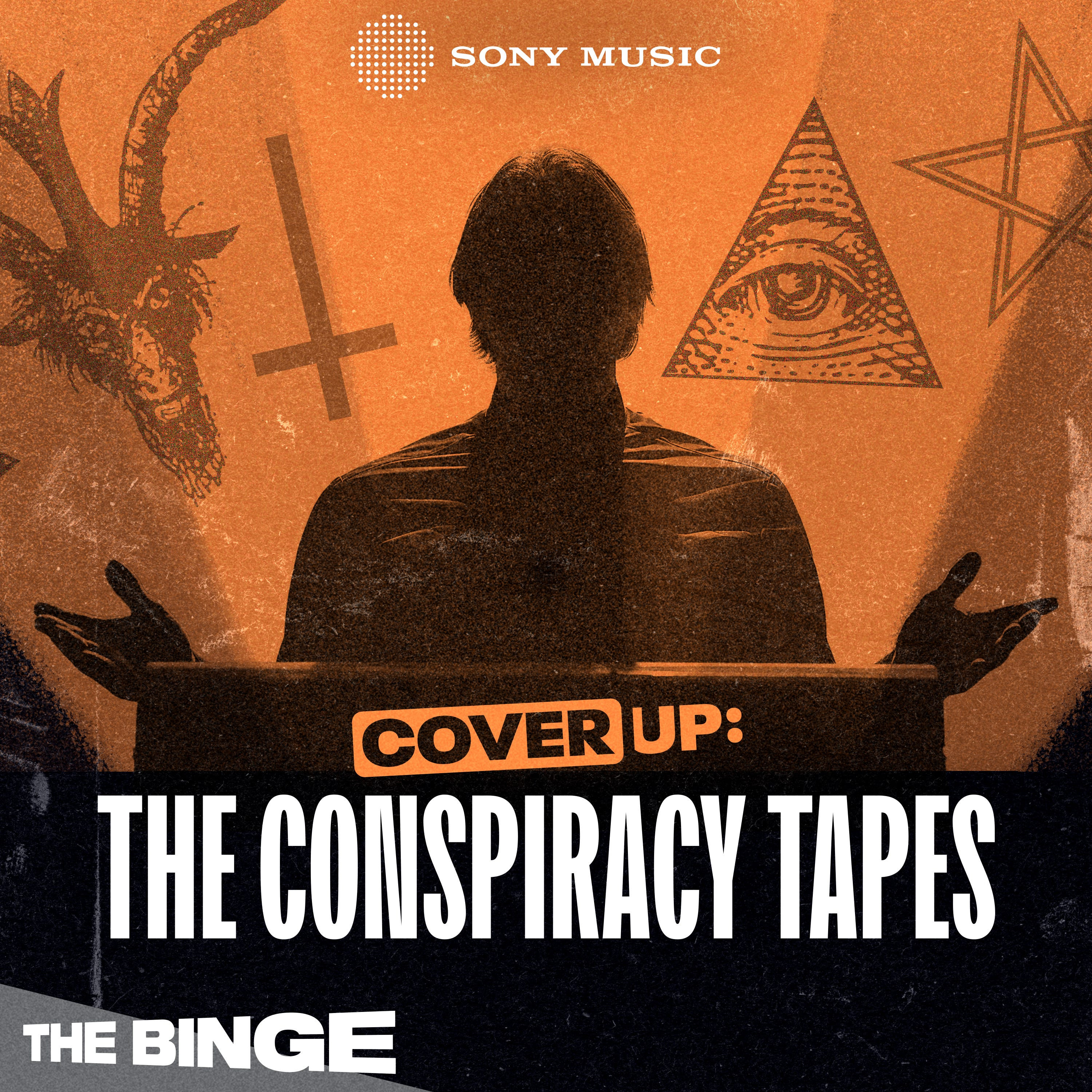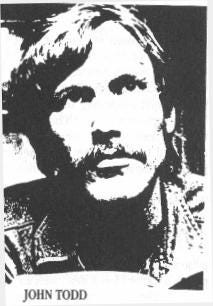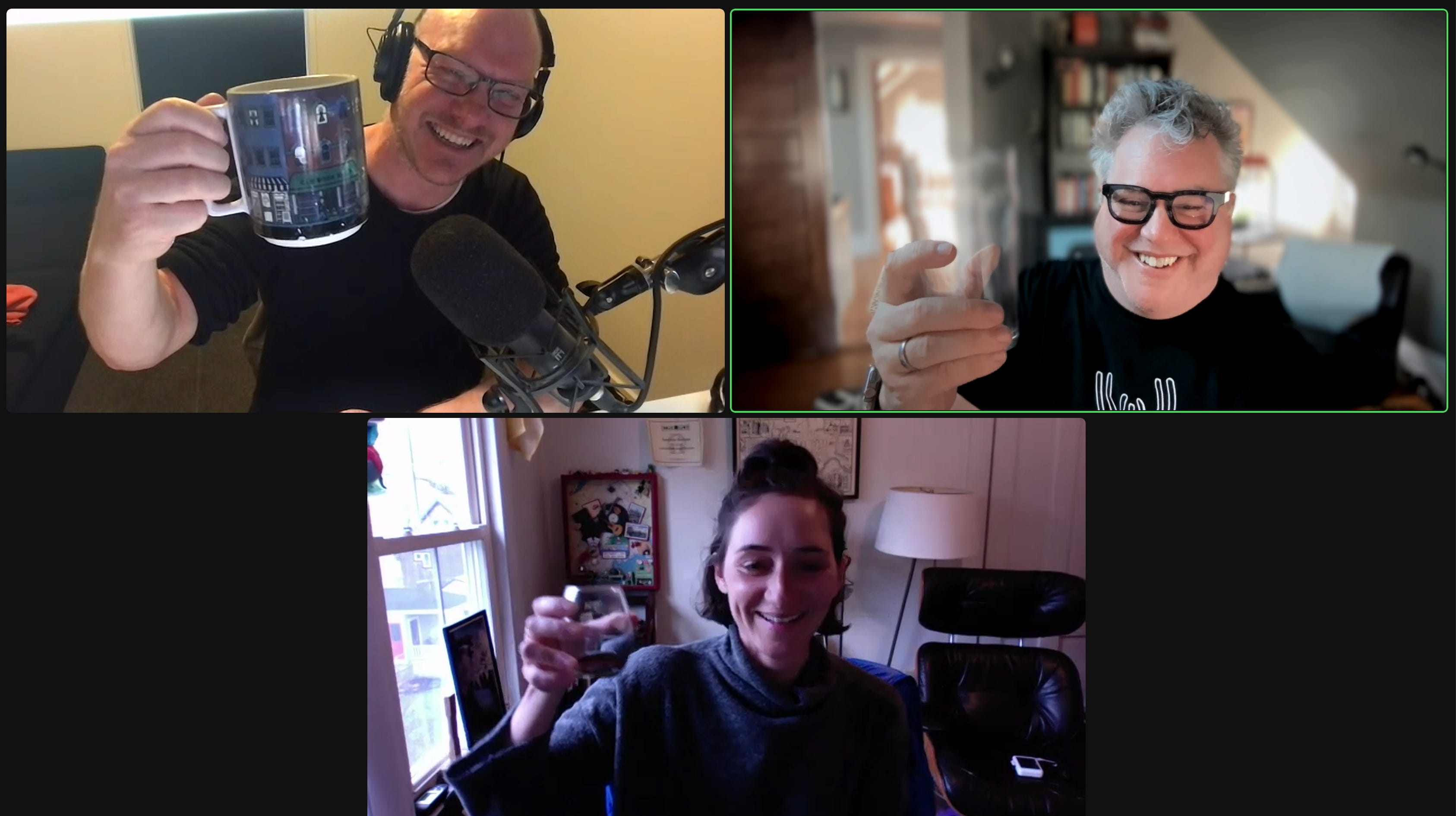The world of conspiracy theories is a labyrinthine realm, captivating and concerning in equal measure. At its shadowy heart often lies the name “Illuminati,” whispered with a mix of fear and fascination. But few know the bizarre, almost unbelievable origin story of this modern obsession – and it begins with a man named John Todd.
Five years ago, the team at Magnificent Noise embarked on a journey to unravel this very story. It was a story they knew was strange, complex, and fraught with sensitive issues. It was a story that would become Cover Up: The Conspiracy Tapes, a podcast series produced with Sony Podcasts, hosted by Paul Murphy and executive produced by Eric Nuzum. This isn’t just another dispatch about podcasting; it’s about the unbelievable tale of John Todd, the man who arguably sparked the modern conspiracy theory as we know it.
 John Todd concept art for podcast series
John Todd concept art for podcast series
The Genesis of a Conspiracy: John Todd’s Unbelievable Claims
In the mid-1970s, John Todd emerged onto the evangelical scene with a sensational and disturbing narrative. He claimed to be a former high-ranking witch, deeply entrenched in Satanic practices, including human sacrifice within elite circles. His conversion to Christianity became the launchpad for a nationwide tour where he warned of hidden Satanists and a secret organization known as the Illuminati. John Todd urged his audiences to prepare for a looming world takeover, advocating for stockpiling weapons and retreating to isolated locations.
John Todd’s influence rapidly grew. His teachings, disseminated through countless cassette tapes, painted a picture of a clandestine Illuminati pulling the strings of world events and economies. He became a key figure in shaping the modern “culture wars,” feeding conservative anxieties about popular culture’s supposed negative influence on youth and fueling paranoia regarding government oppression and surveillance. John Todd‘s rhetoric inspired early militia and separatist movements, ideologies that would later be linked to events like Ruby Ridge and Waco.
 Promotional image of podcast host Paul Murphy for Cover Up: The Conspiracy Tapes
Promotional image of podcast host Paul Murphy for Cover Up: The Conspiracy Tapes
From Influence to Obscurity: The Crumbling Facade of John Todd
Despite his peak influence and widespread teachings, John Todd‘s carefully constructed facade began to crumble. His story, already outlandish, contained inconsistencies and lacked verifiable evidence. Eventually, John Todd vanished from the public eye, becoming, ironically, the subject of numerous conspiracy theories himself. Yet, the impact of John Todd‘s narrative was undeniable. His legacy, though built on questionable foundations, resonated through decades, arguably influencing extremist acts from Ruby Ridge and Waco to the more recent Pizzagate, QAnon, and even the January 6th Capitol riot.
This bizarre and complex story, with its “third-rail issues” involving mental illness, sexual assault, and gender identity, initially deterred some potential collaborators. However, for Eric Nuzum, the very challenging nature of the John Todd saga was precisely what made it compelling.
The Podcast’s Journey: From Cassette Tapes to Compelling Narrative
The journey to bring the John Todd story to light as Cover Up: The Conspiracy Tapes was a long and winding one. It began when Jon Ronson introduced Eric Nuzum to Paul Murphy, a film editor who had been researching John Todd during his exploration of the 1980s Satanic Panic. Murphy’s years of research, coupled with the vision of Magnificent Noise, laid the groundwork for the podcast.
The challenge was immense. As Eric Nuzum described, pitching the story often met with initial buzz, followed by skepticism. The lack of conventional source material – no video footage, few photos, no recorded interviews beyond “shitty cassette recordings” of church talks – made it seem impossible to construct a compelling series.
Paul Murphy, with his background in documentary film editing, saw the potential. His experience in shaping narratives from unconventional and amateur footage proved invaluable. Murphy recognized the raw power in those eight hours of John Todd‘s recordings. He envisioned shaping and polishing them to resonate with a contemporary audience, drawing parallels between John Todd‘s era and the present.
Sound-First Storytelling: Paul Murphy’s Unique Approach
Murphy’s film editing background provided a unique approach. He emphasized sound as the foundation of storytelling. “In documentary film, a lot of the time I’m given material that was not intended to end up in a documentary that was made by an amateur. And then it’s my job to present that to an audience, cut it down, put it in an order that has some kind of meaning to an audience,” Murphy explained. This sound-centric approach was crucial in transforming fragmented audio recordings into a cohesive and engaging narrative about John Todd.
An Unexpected Narrator: Paul Murphy Becomes Central
A surprising turn in the podcast’s development was the emergence of Paul Murphy as a central character. Initially conceived as a behind-the-scenes host, Murphy’s voice became increasingly prominent, culminating in him becoming the focal point of the final episode.
This shift was driven by a late-stage revelation. Just days before the production deadline, a FOIA request yielded a trove of documents from the South Carolina prison bureau, detailing an investigation into John Todd‘s life. These documents unveiled a much darker layer to the story, prompting a dramatic rewrite of the finale. The focus shifted from secondary characters to Murphy’s own perspective and emotional journey through the disturbing discoveries.
Jesse Baker, a collaborator on the project, articulated the rationale for this shift: “I don’t trust any of these people. You are the only person I trust in this situation.” This realization led to Murphy stepping out from behind the editor’s desk and becoming a raw, honest narrator, guiding the audience through the unsettling truths uncovered about John Todd.
In the final episode, after initial brief clips of John Todd, the episode becomes dominated by Murphy’s voice. This unconventional approach, breaking typical audio production rules, proved powerfully effective. Murphy’s personal journey and emotional response to the John Todd story became the heart of the narrative, superseding John Todd himself.
The Uncomfortable Truth: Stepping into the Story
For Murphy, this transition was deeply uncomfortable. His craft was rooted in shaping other people’s stories. Becoming the central subject was a departure from his comfort zone. However, as the unsettling details of John Todd‘s life emerged, it became clear that Murphy’s personal confrontation with these truths was essential to the story’s impact.
“The central question became how did I feel about the terrible things that we were discovering,” Murphy reflected. Stepping into the narrative required him to move beyond simply reading lines to genuinely feeling and conveying the emotional weight of the discoveries. He likened it to acting, not in the sense of faking emotion, but in channeling the raw, initial feelings for the audience. This vulnerability, though challenging, ultimately made the podcast’s conclusion deeply resonant.
 Eric Nuzum, Paul Murphy, and Josie Holtzman virtually celebrating podcast launch
Eric Nuzum, Paul Murphy, and Josie Holtzman virtually celebrating podcast launch
Why John Todd Matters: Exposing the Fringes
The story of John Todd is more than just a bizarre historical footnote. It holds a mirror to contemporary society and the dangers of dismissing fringe elements. As Murphy argues, ignoring these fringes allows them to seep into the mainstream. John Todd‘s story reveals the unsettling origins of many modern conspiracy movements, origins that are far from benign.
John Todd never faced true accountability for his actions and fabrications. He remains revered in some conspiracy circles, a fact Murphy finds “disgusting.” Cover Up: The Conspiracy Tapes aims to shine a light on this dark corner of history, exposing the disturbing realities behind the myth of John Todd.
For Murphy, the story also carries personal weight. He lost a long-time friend to conspiracy theories, highlighting the real-world consequences of these ideologies. He sees parallels between the current world and the 1970s, John Todd‘s prime, fueling his determination to bring this story to light.
The Power of Audio: John Todd’s Cassette Spell
The podcast format itself is integral to the John Todd story. John Todd’s influence was built on audio – cassette tapes carrying his voice and his purported secrets. This highlights the inherent power of audio storytelling, its ability to create intimacy and বিশ্বাস. Cover Up: The Conspiracy Tapes leverages this same power to dissect John Todd‘s influence and its lasting impact. It underscores how simply listening to a voice, especially one promising hidden truths, can be a transformative and, at times, manipulative experience.
Collaborative Creation: The Role of Sony Podcasts
The journey to bring Cover Up: The Conspiracy Tapes to fruition involved navigating the evolving landscape of podcast distribution. After near deals with other distributors fell apart, Sony Podcasts embraced the project with enthusiasm. Despite internal changes and a two-year production period, Sony’s commitment remained steadfast.
Crucially, the collaboration with editors Catherine St. Louis and Jonathan Hirsch proved transformative. Initially anticipating minor edits, the team was challenged to rethink the narrative, particularly the early episodes. This external perspective, from editors who weren’t “in the trenches,” was invaluable. They pushed for a shift in focus, centering the narrative more firmly on John Todd himself, even when it felt uncomfortable.
This collaborative process underscored the essential role of external feedback in creative endeavors. As Murphy noted, “the only way you can really confront the craft and confront yourself is by having somebody there saying, ‘That’s not good enough. I’m not getting this. Or what if you did it this way? What if you did it that way?’ That’s the most valuable thing about collaboration.”
Cover Up: The Conspiracy Tapes stands as a testament to the power of audio storytelling to tackle complex and uncomfortable narratives. It delves into the unsettling story of John Todd, the unlikely architect of modern conspiracy theories, offering crucial insights into the enduring appeal and potential dangers of misinformation. Listen to Cover Up: The Conspiracy Tapes on your preferred podcast platform and confront the unbelievable tale of John Todd for yourself.

